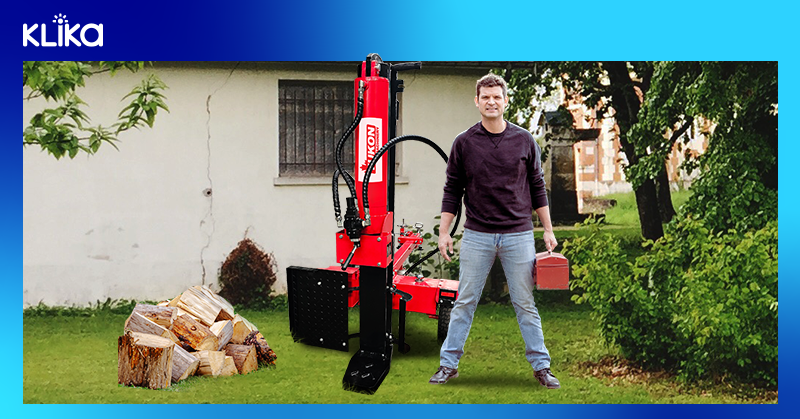How to Maintain a Log Splitter
A little care goes a long way in extending your log splitter’s life. Follow these simple maintenance steps to keep it efficient and ready for action.

A log splitter is one of those tools you don’t think about much—until it stops working. Whether you’re splitting wood for the fireplace or prepping for a camping trip, maintaining your log splitter is key to its longevity and performance. With just a little effort, you can avoid costly repairs and ensure it’s ready to go whenever you need it.
Here’s a practical guide to help you keep your log splitter in top-notch condition.
1. Regular Cleaning
After a hard day’s work, your log splitter is likely covered in wood chips, sap and debris.
-
Why it matters: Build-up can interfere with the machine’s performance, especially around hydraulic components.
-
What to do: Use a soft brush or cloth to remove dirt and wood particles. Pay close attention to areas around the wedge and hydraulic system, and clean these areas thoroughly to avoid residue build-up.
2. Inspect the Hydraulic System
The hydraulic system is the heart of your log splitter, so keeping it in good condition is crucial.
-
Check Fluid Levels: Regularly check the hydraulic fluid and top it up with the manufacturer-recommended oil if it’s running low.
-
Inspect Hoses: Look for any signs of cracks, leaks or wear in the hoses. If you spot issues, replace the hoses before your next use.
3. Sharpen and Maintain the Wedge
The wedge does the heavy lifting, so keeping it sharp ensures efficient splitting.
-
Sharpen Regularly: Use a file or grinder to sharpen the wedge when it starts to dull. A sharp edge means less strain on the machine and cleaner splits.
-
Inspect for Damage: Check for significant nicks or burrs and file them smooth to prevent further deterioration.
4. Tighten Bolts and Fasteners
A log splitter takes on a lot of force during operation, which can loosen bolts and fasteners over time.
-
Check After Use: Inspect bolts, nuts and fasteners, especially around the frame and hydraulic components.
-
Retighten as Needed: Keep everything secure to ensure the machine remains firmly stable and safe to use.
5. Lubricate Moving Parts
Friction is the enemy of any mechanical tool and your log splitter is no exception.
-
Apply Grease: Regularly grease pivot points, hinges and any other moving components. This reduces wear and keeps everything running smoothly.
6. Store Properly
How you store your log splitter during downtime matters just as much as how you use it.
-
Protect from the Elements: Keep your splitter in a dry, covered area to prevent rust and environmental damage.
-
Off-Season Tips:For gas-powered or electric models, drain the fuel or disconnect the battery before storing it for extended periods.
7. Routine Checks Before Use
A quick once-over before you fire up your log splitter can save you from headaches later.
-
Inspect Components: Look for visible signs of wear, leaks or damage.
-
Test Run: Split a small piece of wood to ensure everything is working as it should. If something feels off, address it before tackling bigger jobs.
Conclusion
Maintaining a log splitter isn’t complicated, but it does require consistency. Regular cleaning, inspections and proper storage will not only keep your machine safe and efficient but also extend its lifespan. Just a few minutes of care after each use can save you from unexpected downtime and costly repairs in the long run.
Ready to keep your log splitter in peak condition? Follow these tips and enjoy hassle-free wood splitting for years to come!
You May Also Like:
- What Are the Benefits of Using a Log Splitter?
- Log Splitter Buying Guide
- Is It Easier to Split Fresh or Dry Logs?


